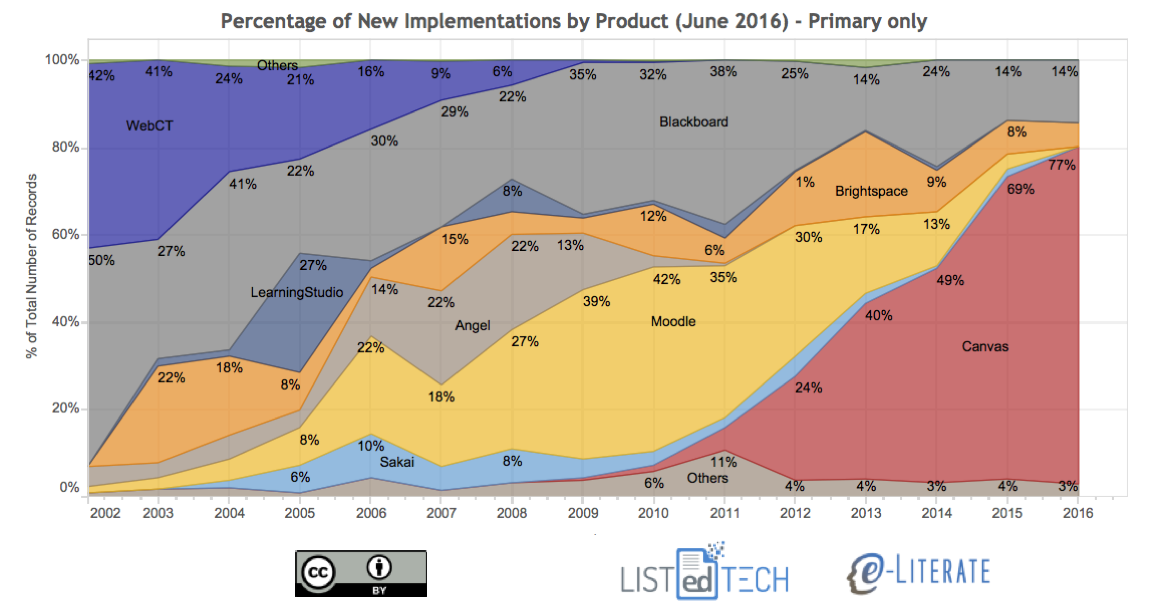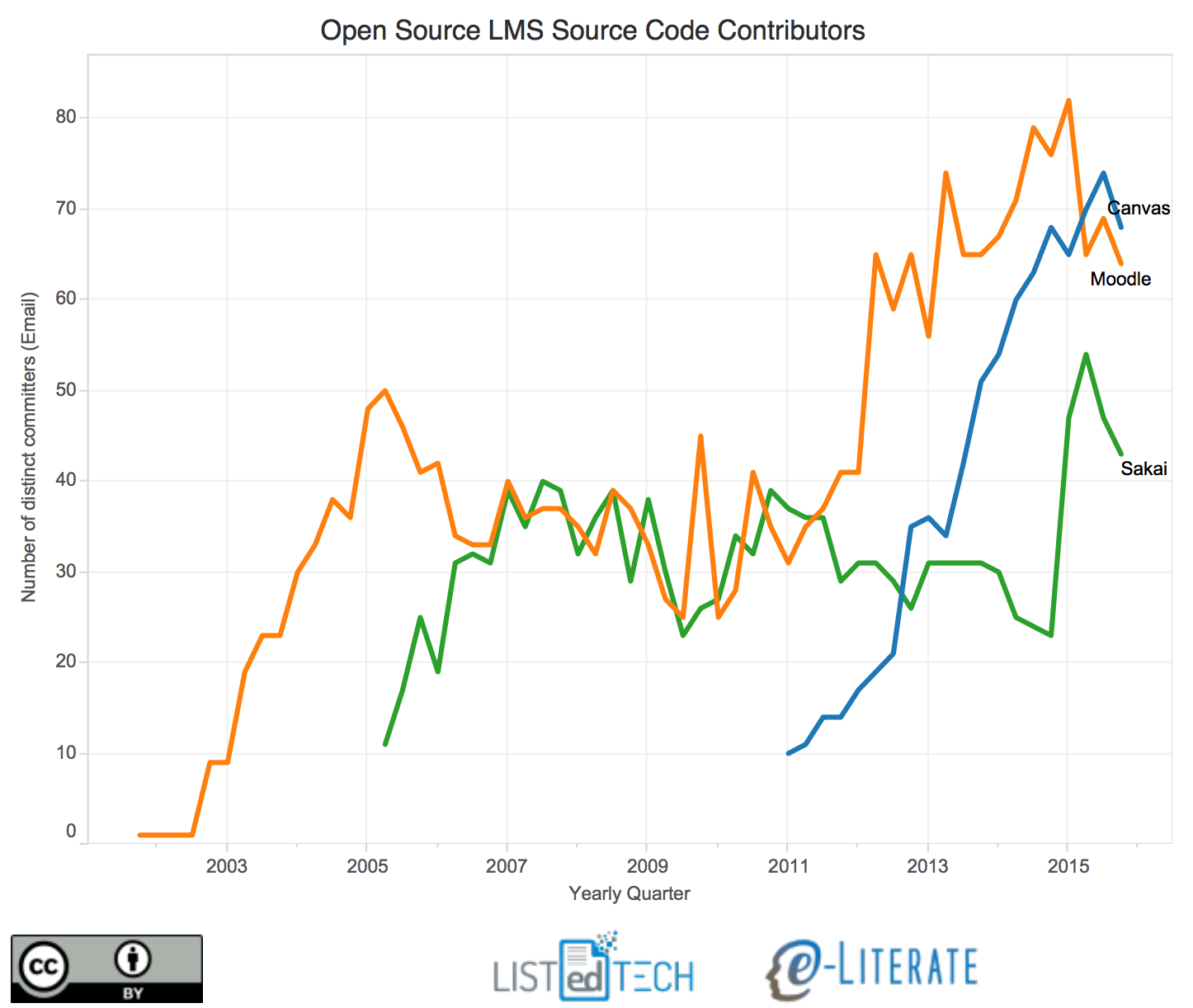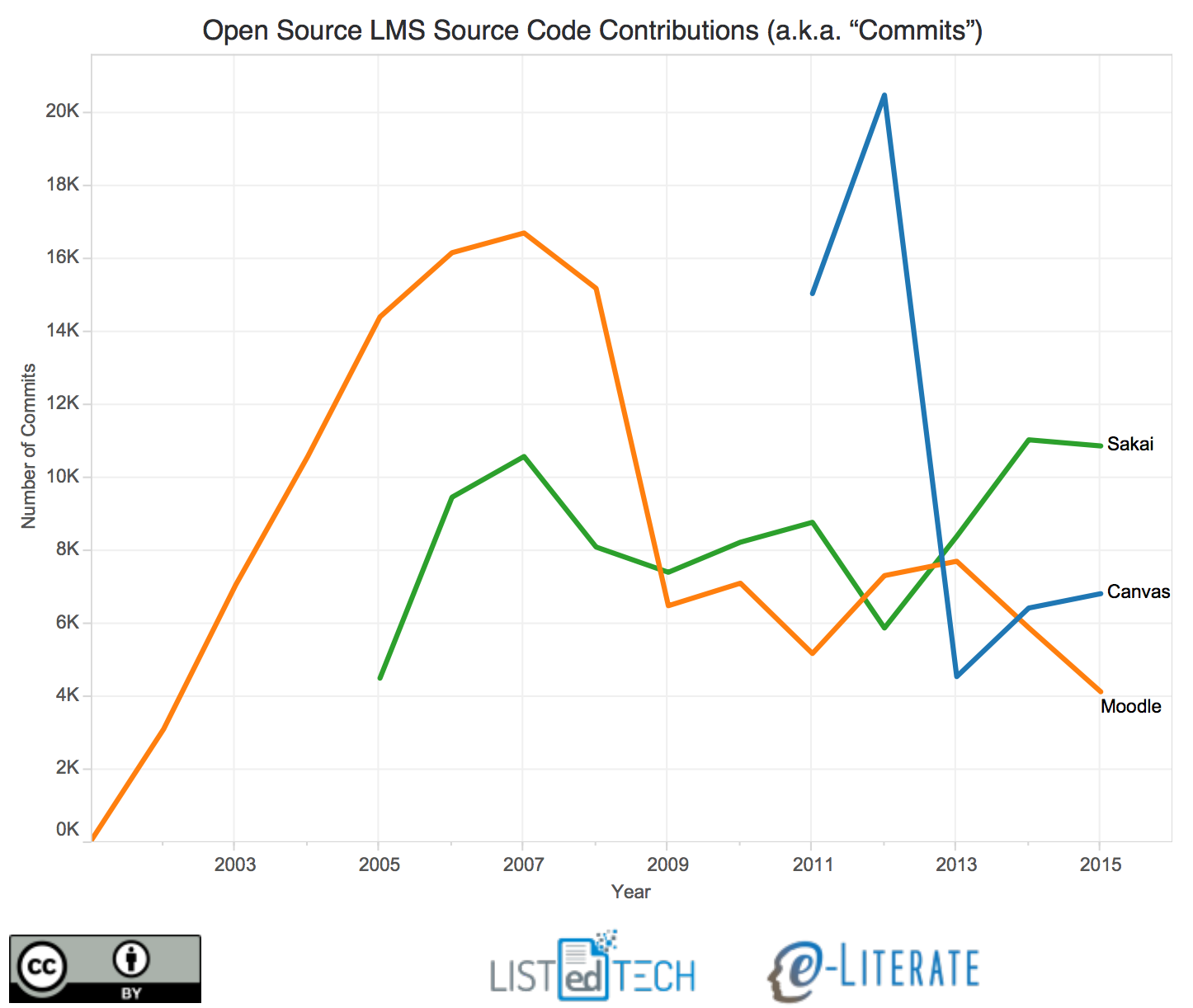At the MoodleMoot in late June in Los Angeles, which serves as close to a users conference for the open source Moodle LMS community as any other event, there was a strong sense of continuity and general improvements. Rather than aggressive rearchitectures and product lineup changes, the Moodle roadmap is based on hitting singles and running the bases and not worrying about getting the big hits.
In an interview with Moodle HQ founder and CEO Martin Dougiamas last fall, I asked him to respond to my observation that Moodle is at an inflection point based on Blackboard acquisitions of Moodle Partners, the creation of the Moodle Association, and Remote Learner leaving the Moodle Partner program. Martin’s response was interesting and is consistent with the message at the conference this summer.
Phil: My note on “inflection point” is not based on a profit-driven assumption. The idea is that significant changes are underway that could change the future direction of Moodle. A lot depends on Blackboard’s acquisition strategy (assuming it goes beyond Remote-Learner UK and Nivel Siete), whether other Moodle Partners follow Remote-Learner’s decision, and whether Moodle Association shows signs of producing similar or larger revenues than the Moodle Partner program. What I don’t see happening is extension of the status quo.
Martin: Moodle’s mission is not changing at all, we are just expanding and improving how we do things in response to a shifting edtech world. We are starting the Moodle Association to fill a gap that our users have often expressed to us – they wanted a way to have some more direct input over major changes in core Moodle. There is no overlap between this and the Moodle Partners – in fact we are also doing a great deal to improve and grow the Moodle Partner program and as well as the user experience for those who need Moodle services from them.
This view of consistent mission and “just expanding and improving” can be seen in the product roadmap priorities, or more specifically in the upcoming steps along that roadmap. The key priorities for the future of Moodle presented at the conference:
- Simplifying UX on Web and Mobile with Core activity overhauls and a Dashboard
- Improving Interoperability and Integration with IMS standards, and additional tech provider integrations
- Increasing Mobile Feature Set planning 100% capable for 80% of students soon
- Improving Computer-Assisted Education with analytics-based notifications to help you teach and learn
As can also be seen in the interview response, the new Moodle Users Association is positioned as an additive route to give individuals and organizations more direct input on product direction. Released in January of this year, this association is also intended to diversify funding for Moodle HQ and its development staff. Half a year after launch, the Moodle Users Association has 152 members – 6 gold level, 7 silver, 15 bronze, 118 individual and 6 anonymous. This leads to AUD104,900 – AUD153,680 in annual dues (currently equivalent to ~ US $80k – US $117k), depending on level of contribution by the anonymous members. As I described in January:
What would it take to generate “significant revenue”? As of a year ago, Moodle HQ had 34 employees which would require $3 – $5m of revenue to continue support For MUA to have significant impact, I would say that it needs minimum revenues of $500k – $1m within a couple of years. Without this level, the revenue itself is just in the noise and revenue has not been diversified. This minimum level would require 200+ organizational memberships in rough numbers.
The progress of the MUA has been slow but steady. $500k in a couple of years is still possible if the group continues to gain at the same pace.
There was an interesting response from Martin during the Q&A after his keynote, when someone (from a long-time Moodle-using university) asked for his view on the competitive nature of Canvas. Martin replied (and I paraphrase; someone correct me if I’m wrong) that Moodle is not profit-driven and it doesn’t matter that much when schools move to Canvas. What? The community, at least in the US, cares quite a bit. Moodle Partners care about their business, Moodle advocates care about the adoption and health of the open source community, and the level of Moodle development staff depends on how many schools choose Moodle over Canvas or any other solution. I get the point that Moodle HQ may not care for the same reasons as a VC-backed profit-driven company, but they should care.
There are two key features planned for Moodle 3.2 (planned for November 2016 release) that do appear directed at the competition, and Canvas in particular. Those features are the introduction of Blockless Themes and updates to the CSS Framework. As described in a recent MoodleNews article on this theme:
A discussion on navigation, usability and design is, for many in the moodleverse, an urgent one. Martin himself admitted it: “We have a problem. When people look at Moodle out of the box, they say: wow, this looks old”.
Moodle is the result of millions of collaborations over the years. It is no surprise that many contributors have come up with hundreds of beautiful and practical themes. But the current design hinders usability, and thus widespread adoption. New users should not have to install plugins for their Moodle to become usable. A new set of design principles will not only make Moodle intuitive “out of the box”, it will also make it easier for designers to create their own new flavors of Moodle.
There have been others in the Moodle community who have created themes to address the same problem, most notably Moodlerooms with the Snap theme. When I talked to Martin at the conference, and in the video embedded in the MoodleNews article, he stressed that while they can learn from others creating themes, the new Blockless Theme will start from a new design and new code.
From my perspective of the US and Canadian markets, this theme and the general attempt to improve usability is the biggest challenge facing Moodle. As seen in a chart that I shared in a post over the weekend, Moodle is simply not gaining new higher ed institutions in the US and Canada.

This is not a healthy situation from the long-term perspective of the Moodle community. Yes, the system has impressive market share in the US and even more impressive global share, but a vibrant community cannot thrive if it is just trying to hold on to existing schools without any significant new adoptions. This is already the case in the US and Canada – at some point this dynamic will hit other global regions. We are already seeing this take effect in the UK and Australia as well.
Nevertheless, Moodle is a large community with healthy diversity of source code contributors (as seen in analysis of github in a post shared by Michael). It is important to recognize the nature of this analysis.
Tracking committers and commits on a software project is a little bit like tracking editors and edits on a document. It doesn’t tell you a lot about what they’re doing together without digging a lot deeper. It just gives you a sense of the level of activity in a project. A second caveat is that Github projects don’t necessarily show all activity related to the software you care about. For example, a lot of Moodle development happens in the plugins, which are developed in separate projects. Sakai has a similar repository of “extras” that they call “contrib.” Instructure may be working on major additions to Canvas that they have chosen not to make public yet for competitive reasons. Our analysis is therefore suggestive rather than definitive, particularly when it comes to comparing activity across different projects.

Yet there has been a drop in the number of code commits in the past few years.

As Michael described, this perspective is suggestive rather than definitive. The Moodle community is healthy, but I would suggest that it would be healthier with a stronger focus on being better than “the competition” and convincing new schools to adopt. The level of contributions might be showing the signs of lack of recent adoption in some major markets.
The general sense that I got from the conference was that the US Moodle community is pleased with the direction of Moodle but would like a more aggressive approach to major improvements (usability and multitenancy in particular). I believe the response of schools to the November release will be a significant marker on just how successful the small-ball approach can be. Will we start to see Moodle being a serious competitor for new LMS selections? For the good of the community, I would hope so.
[…] ← MoodleMoot US 16: Playing small-ball […]